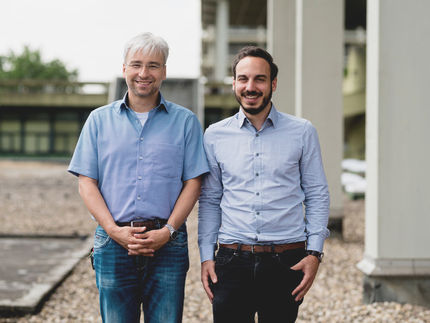Effort to regenerate damaged spinal cords turns to new model
Advertisement
For more than 400 years, scientists have studied the amazing regenerative power of salamanders, trying to understand how these creatures routinely repair injuries that would usually leave humans and other mammals paralyzed - or worse. Now, fueled by a highly competitive National Institutes of Health Grand Opportunity grant of $2.4 million, a multi-institutional team of researchers associated with the University of Florida McKnight Brain Institute's regeneration Project has begun creating genomic tools necessary to compare the extraordinary regenerative capacity of the Mexican axolotl salamander with established mouse models of human disease and injury.
Researchers want to find ways to tap unused human capacities to treat spinal cord injury, stroke, traumatic brain injury and other neural conditions, according to Edward Scott, Ph.D., principal investigator for the GO grant and director of the McKnight Brain Institute's Program in Stem Cell Biology and Regenerative Medicine.
"The axolotl is the champion of vertebrate regeneration, with the ability to replace whole limbs and even parts of its central nervous system," Scott said. "These salamanders use many of the same body systems and genes that we do, but they have superior ability to regenerate after major injuries. We think that studying them will tell us a lot about a patient's natural regenerative capacities after spinal cord injury and nerve cell damage."
The issue of what controls organ regeneration was named among the top 25 major questions facing scientists in the next quarter century by Science magazine in 2005, Scott said. With medical science continually adding years to the human lifespan, the importance of "rebuilding and restoring" old tissues and organs is growing. But science had to enter the 21st century to fully explore the use of the highly regenerative axolotl as a model for human disease.
"Only now have new genetic, molecular and cellular technologies as well as scientific knowledge of the salamander, mouse and human genomes and 'regeneromes' risen to a level where scientists can compare systemwide responses to injury," according to Dennis A. Steindler, Ph.D., executive director of UF's McKnight Brain Institute and a co-investigator on the grant.
"I am extremely hopeful with the discoveries being made in comparative regenerative biology that the questions surrounding cell and tissue regeneration in the human following injury or disease are going to be answered," Steindler said. "It is going to take broad, multidisciplinary collaborations across a number of scientific fields, but we are making that happen. I think the GO grant shows that these efforts are recognized and valued on a national level."
The Regeneration Project is also supported by private foundations such as the Thomas H. Maren Foundation and the Jon L. and Beverly A. Thompson Research Endowment, the UF Office of the Vice President for Research, and an anonymous donor, Steindler said. Enhancing the discovery process are Regeneration Project research fellows - scientists who work across institutes and universities to advance discoveries in tissue and organ regeneration to the clinic.
"The axolotl is the highest, most complex organism that can still do this clever trick of completely reconstructing a whole body part in adulthood," said Arlene Chiu, Ph.D., a scientific adviser for the Regeneration Project and director of New Research Initiatives at Beckman Research Institute of the City of Hope. "I like to think of it in construction terms where we need both the materials such as bricks and beams and the architect's plans. In regenerative medicine, can we learn where the biological blueprint resides, and understand the basis of restoring and reorganizing many different types of lost cells and tissues? Muscles, bones, nerves and blood vessels all have to be reconstructed at the right time and in the right place, all in perfect coordination with the original biological master plan.



























































